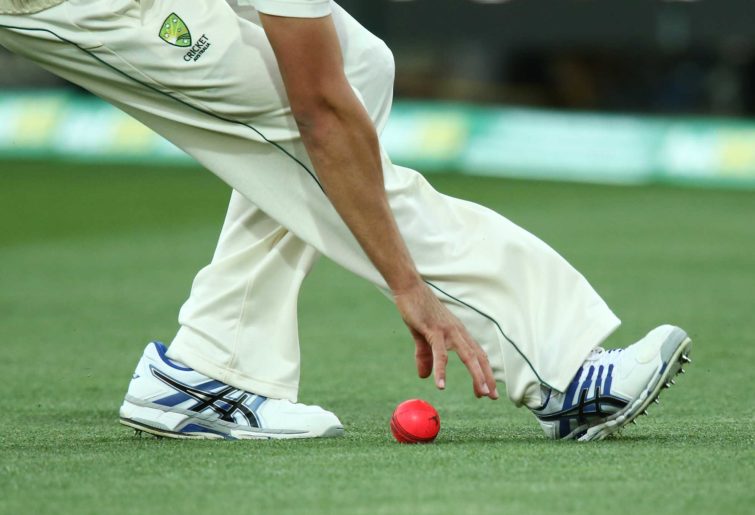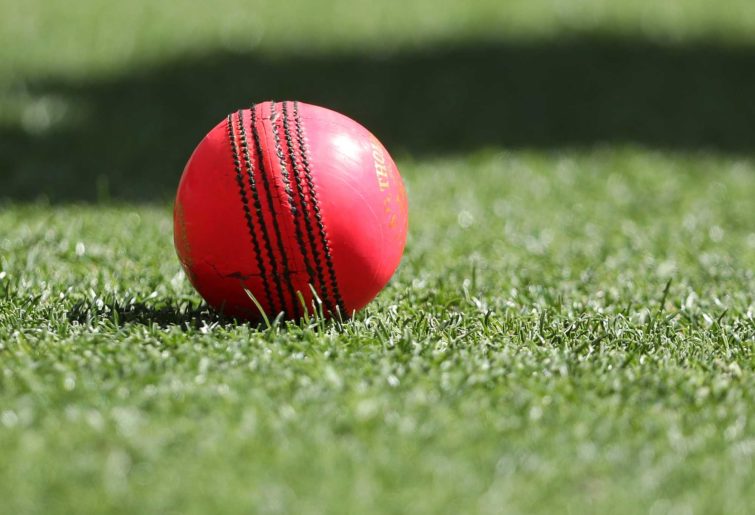Chasing 337 to win in a 50-over match, the team batting second are 6-171 after 35 overs.
They require 11.07 runs per over and, equally importantly, 41.5 runs per partnership, with four partnerships still available for utilisation counting the one currently in progress.
Their wicket affordability factor (WAF) is one every 22.5 deliveries. Six is actually a par number of wickets to be down at this point. One more – to make it seven – within those first 35 overs would make them virtually bowled out (VB) in a reduced-overs scenario.
However, a par score for those par six wickets down at this point would be 236 – that is, 6-236 off 35 overs would mean the run chase was in equilibrium, while either one or two runs fewer would mean the fielding side had their noses fractionally in front. Another wicket at that same score – so, 7-236 – has the fielding side comfortably in the box seat all things considered.
However, the chasing side is behind the eight ball because although only six wickets down, they have only 171 on the board. Then it rains and ten overs are lost. The next two in are Muck It Up Frank Duckworth and Tony Lewis Really Blew It. After that will come a third chappie to really make Steven Stern the whole equation for the chasing side.

(Photo by Morne de Klerk/Getty Images)
With the 15 remaining overs cut to only five, suddenly it is deemed that the chasing side have to score another 136 off those five overs, or 27.5 per over, whereas when the interruption occurred they needed ‘only’ 11.07 per over off the final 15 had the innings run its natural course. I say ‘only’ because, make no mistake, the defending side were well and truly on top and the chasing side were extremely unlikely to win in the original event.
However, a rare miracle was still possible, cricket being a funny game and all that. Changing the requirement to 27.5 per over changed even the possibility of an outside miracle against the grain of normal events.
Fair dinkum, they may as well have not even retaken the field and simply awarded the game to the defending team then and there. I mean, sure, the runs per partnership requirement had been massively slashed from 41.5 to now only 34 and, sarcasm aside, the WAF had genuinely reduced from 22.5 to 7.5, but seriously, you could have given that chasing side all ten wickets (or partnerships) back and they still would not have stood a chance in hell, not even any hope of a freakishly unlikely miracle.
You could have sent in any two batsmen from history in their prime, the choosing of the chasing team, whatever their nationality, and allowed them to bat the whole remaining five overs irrespective of how many times they were subsequently dismissed and still the chasing team would have had not one remote iota of hope to score 136 off those five overs.
If the degree of difficulty of the remaining run chase taking ‘remaining resources for the batting side’ into account was supposed to be roughly equal after the resumption to what it had been at the precise onset of the interruption, then Messrs Duckworth, Lewis and Steyn failed miserably, and this has not been the first time.
That occurrence in the India-Pakistan match at last year’s World Cup should have sounded the death knell for the DLS method.
It should have been its Waterloo in the same way that the third final of the 1988-89 Australian Tri-series between Australia and the West Indies or the 1992 World Cup England-South Africa semi-final did for the even more ludicrous reset target methods that preceded it. It was surely every bit as farcical.
For too long now they have been able to wriggle free in the face of such occurrences with generic PR statements along the lines of, “Yeah it does seem that there’s a deficiency in that specific type of situation, but our latest updated program will fix it”.
Yeah right. Stop pulling our leg stump time after time.

(Photo by Morne de Klerk/Getty Images)
This article will be in five parts. Part 2 will expose the some of the very real flaws in the Duckworth-Lewis-Stern method and highlight the lack of logic in some of the targets it sets as well as the inconsistency in its methodology across the various types of interruptions that can occur in a limited overs match.
Part 3 will present a more mathematically consistent method that I have loosely based on the original somewhat vague but nonetheless noble DL principle of ‘taking wickets into account’. I have used inverted commas because DL has never done this even nearly as well as they have always made out to have done except for in one particular type of interruption that can occur.
Part 4 will be a continuation of Part 3 focussing on a specific type of interruption among the various different types that can occur. At the end of that section I will also provide a much better reset solution to that infamous game that I revisited in the introduction of this Part 1 introduction to this whole series.
Part 5 will compare and contrast the DLS method and the method that I believe would be better, and in the absence of any other name at this point I will call it ‘McConville-Warehouse’ in honour of the Brisbane summer and winter Warehouse competition that I have been umpiring in since 2008. As a disclaimer, do not be confused, it is not indoor cricket but standard outdoor as per the MCC laws of the game. McConville-Warehouse will simply be truncated to ‘McWarehouse’.
Part 6 will finish by addressing the minimum overs requirement in reduced-overs matches and contend what should be the appropriate number as well as how to reconcile the numbers commissioned to the fielding team’s bowlers in these circumstances.
I will sign off on this introductory Part 1 by also pointing out that there are actually two DLS systems in existence: the original standard version and the professional version. The standard version was first revealed to the cricket world during the 1999 World Cup in England and then replaced by the professional version a bit over four years later in late 2003.
The professional version apparently relies on keeping regularly updated running stats fed into a gigantic computer data base and remains shrouded in secrecy not available to the public domain. It is only in recent years that the standard version has been released to club or grade levels of the game by way of an easily downloaded mobile phone app that manifests itself in the form of a calculator.
One could argue that if the original standard version were replaced (by the professional version), that would mean that it was inadequate in the first place, and that is precisely what I will show in Part 2 by way of some hypothetical scenarios, which in turn begs the rather obvious question of why on earth associations at club level would want to switch to something that is little better than either of the two moronic methods that it replaced.
In Part 2 I can only present actual situations that really did occur when using the aforementioned professional version (for the reason stated earlier), situations that still nonetheless gave rise to some targets that could be diplomatically regarded as ‘questionable’ but in reality, in the interests of calling a spade a spade, were actually genuinely moronic.
from The Roar https://www.theroar.com.au/2020/10/19/reinventing-the-dls-method-part-1/

0 Comments